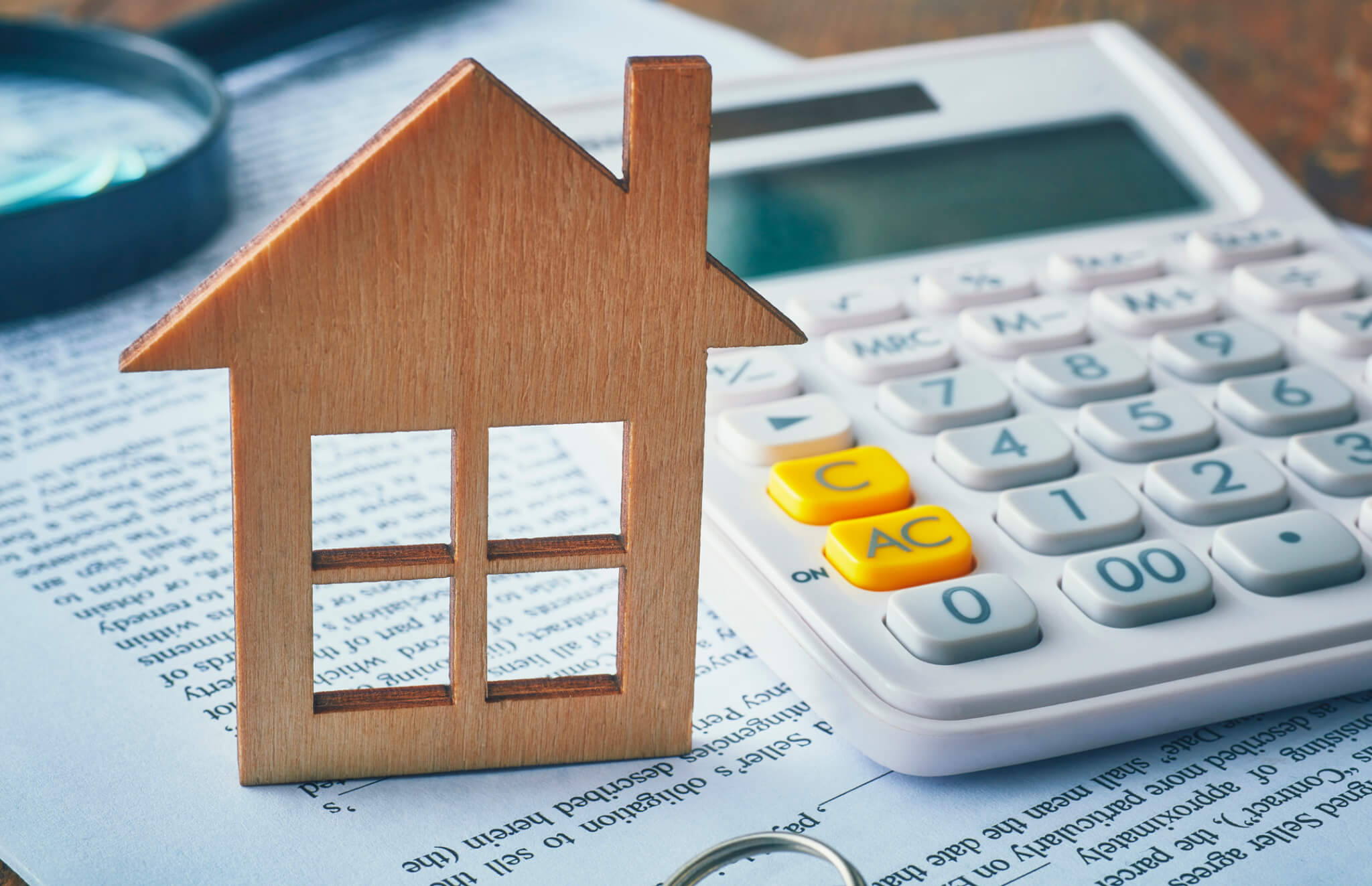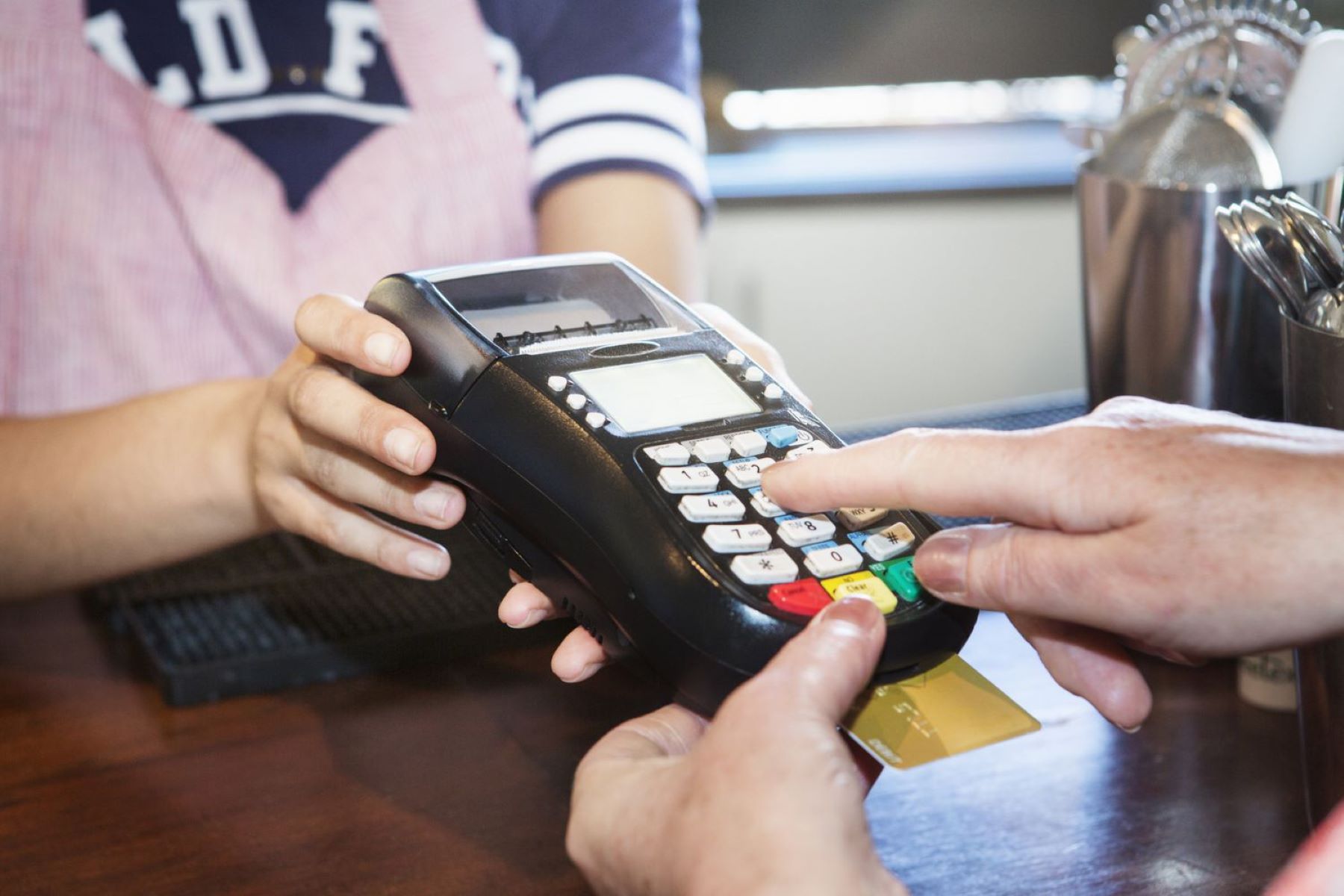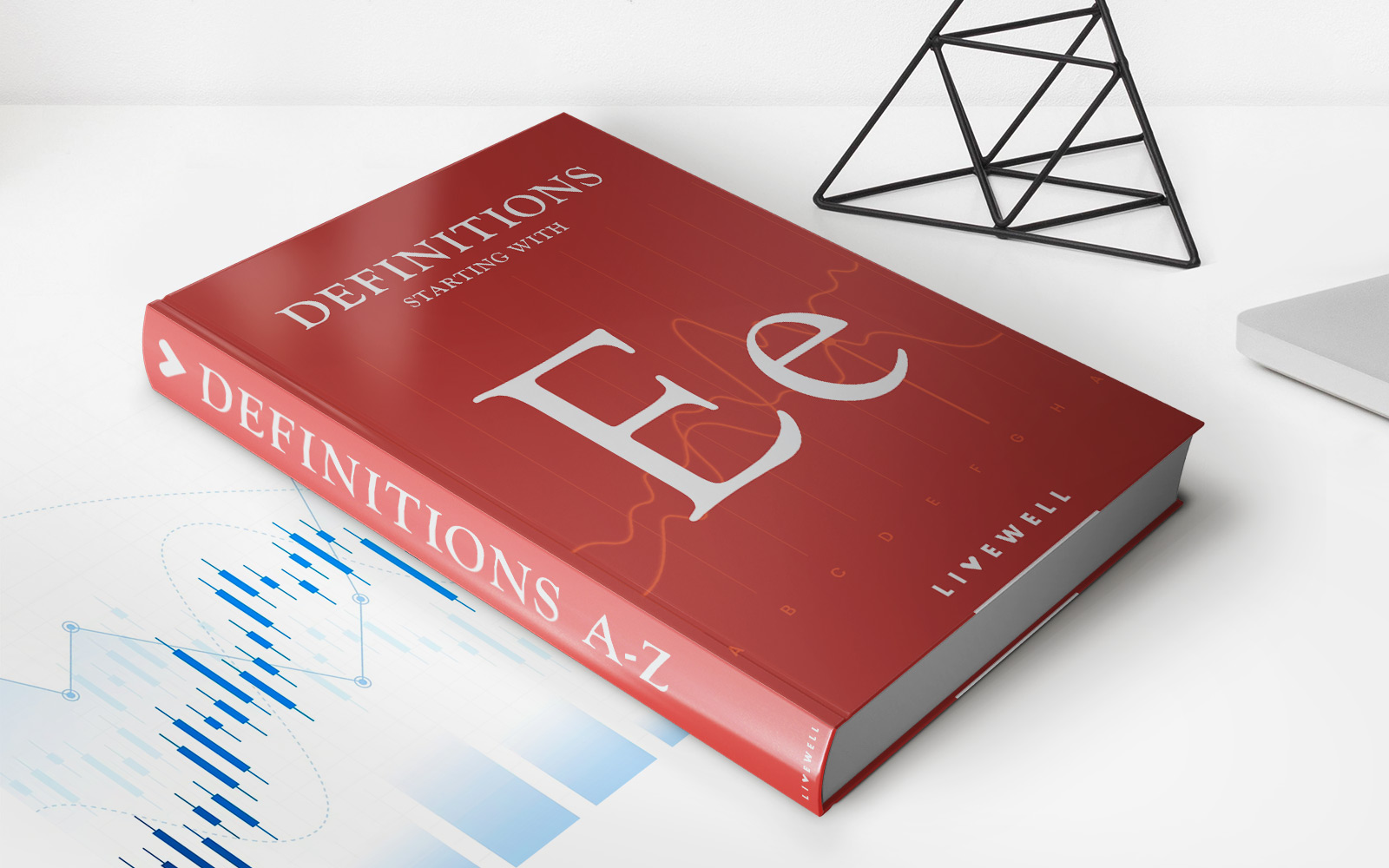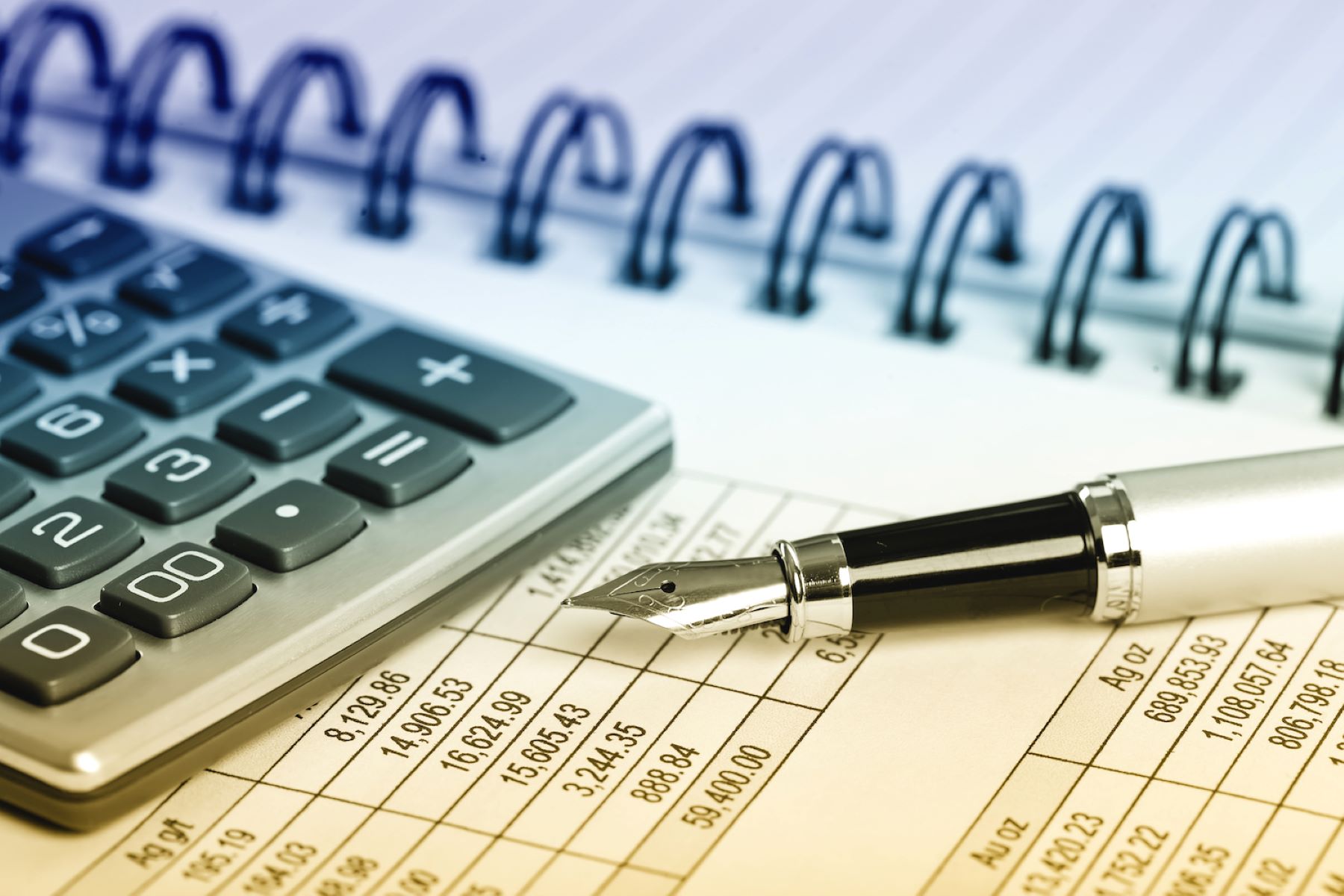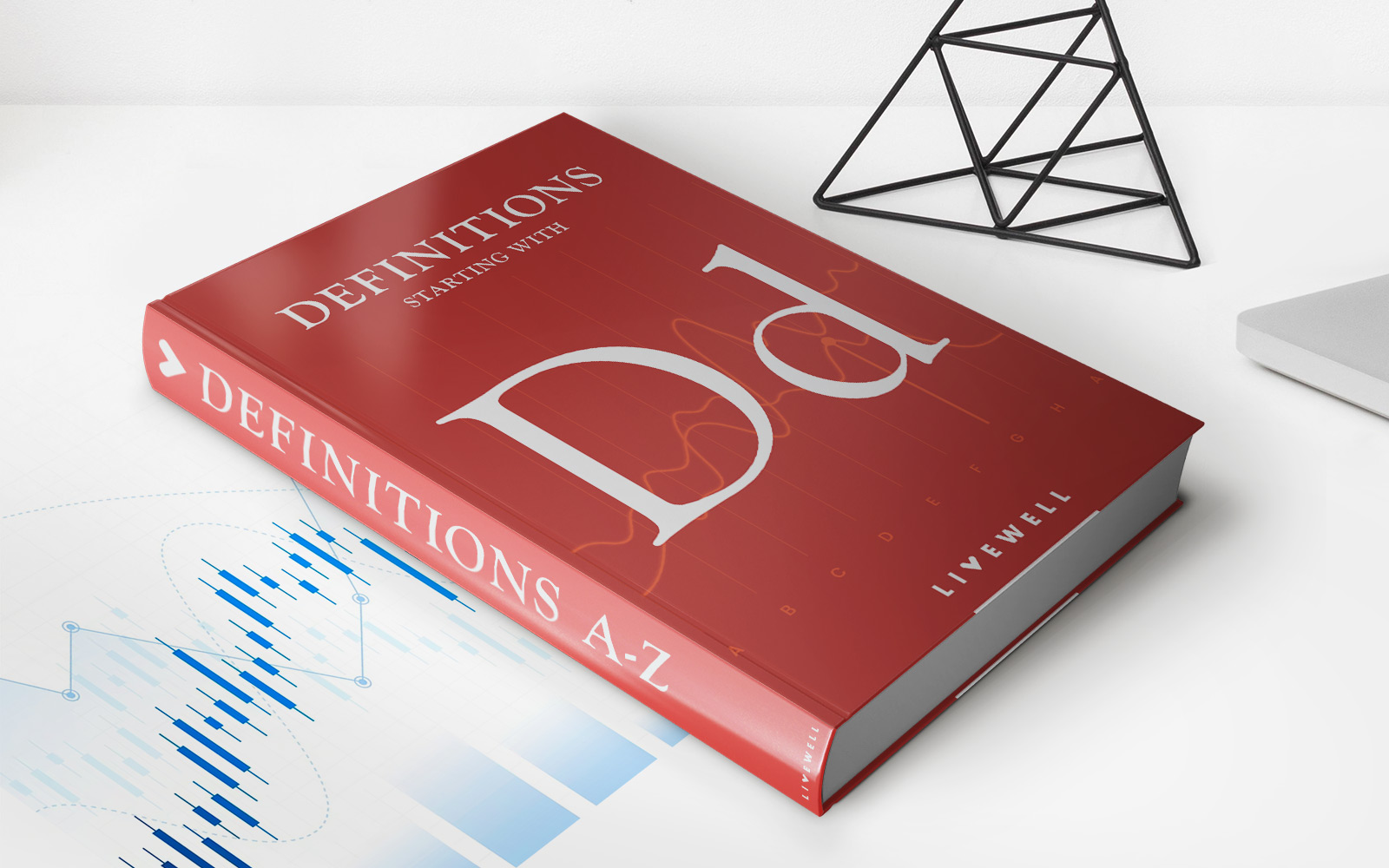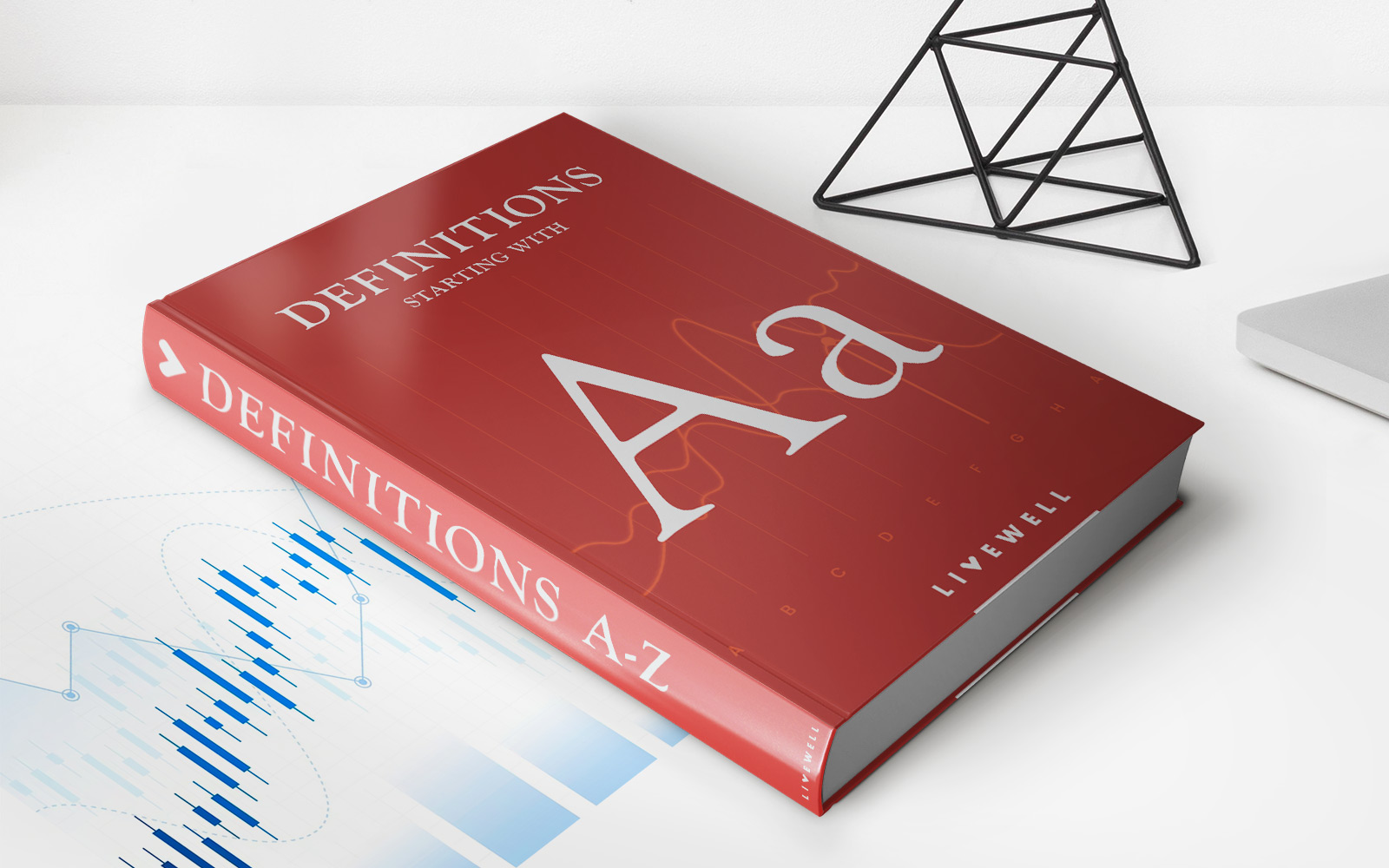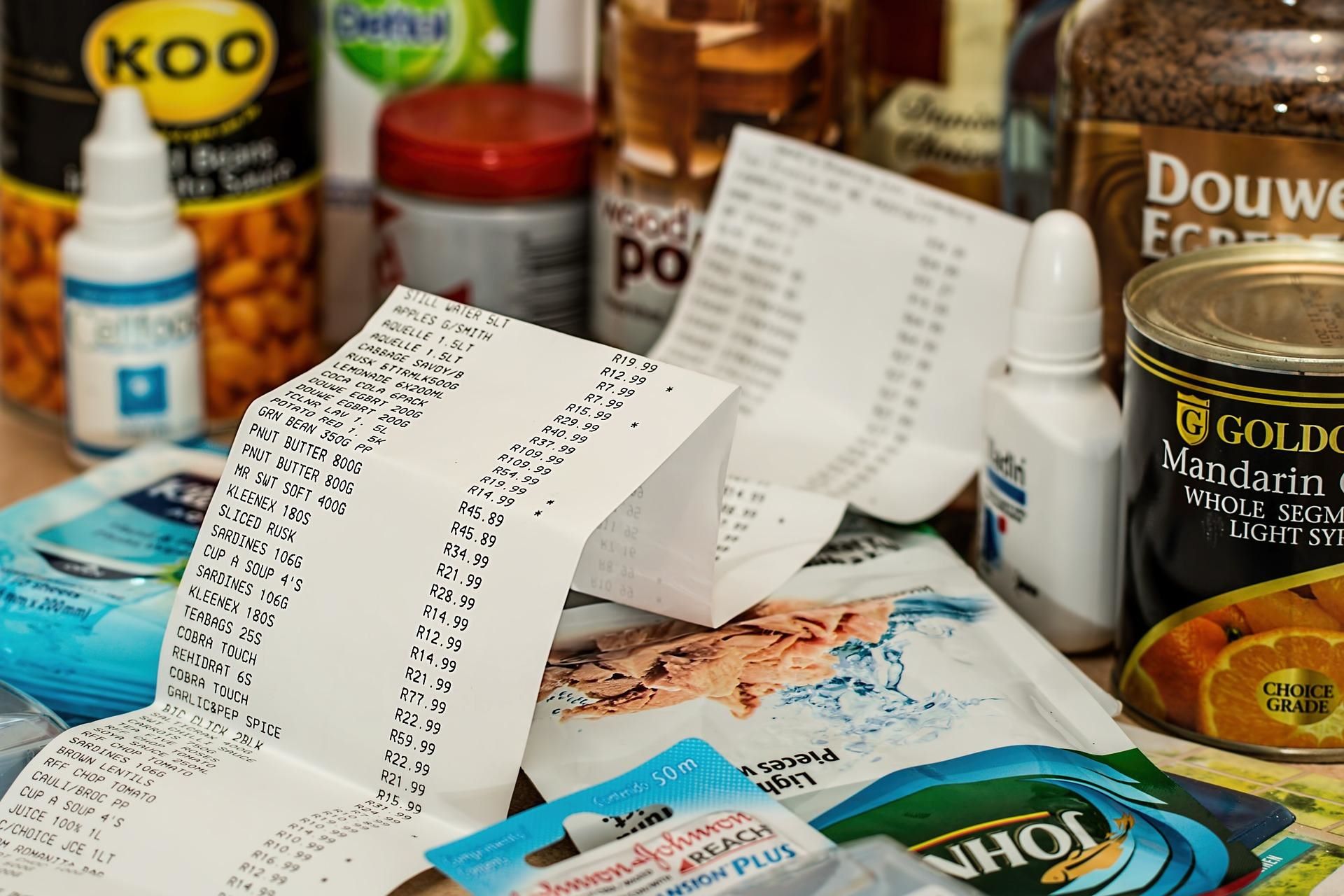

Finance
How To Record Food Expenses In Accounting
Published: October 8, 2023
Learn how to record food expenses in accounting and manage your finances effectively. Improve your financial tracking with our expert guidance.
(Many of the links in this article redirect to a specific reviewed product. Your purchase of these products through affiliate links helps to generate commission for LiveWell, at no extra cost. Learn more)
Table of Contents
- Introduction
- Importance of Recording Food Expenses in Accounting
- Basic Principles of Recording Food Expenses
- Categorizing Food Expenses
- Tracking Vendor Invoices
- Recording Cash Purchases
- Utilizing Accounting Software for Food Expense Recording
- Reconciling Food Expenses with Bank Statements
- Analyzing Food Expense Trends
- Conclusion
Introduction
Proper accounting practices are essential for the financial health and success of any business. When it comes to managing expenses, it’s crucial to accurately record and track every transaction. One particular area that often presents challenges is the recording of food expenses.
Food expenses can be a significant part of a company’s budget, especially for businesses in the hospitality industry or those that provide meals for their employees. However, many businesses struggle with correctly categorizing and tracking these expenses, which can lead to financial discrepancies and inaccurate reporting.
In this article, we will explore the importance of recording food expenses in accounting and provide practical tips for doing it effectively. By following these guidelines, businesses can gain better control over their finances, make informed decisions, and ensure compliance with tax regulations.
Whether you operate a restaurant, manage a catering service, or simply provide meals for your team, understanding how to record food expenses is essential. Let’s dive in and uncover the basic principles and best practices for accurate food expense recording.
Importance of Recording Food Expenses in Accounting
Accurate and thorough record-keeping of food expenses is crucial for several reasons:
- Budgeting: By properly recording food expenses, businesses can create realistic budgets and allocate funds appropriately. This ensures that there are no financial surprises and helps maintain financial stability.
- Profitability Analysis: Tracking food expenses allows businesses to analyze their profitability. This analysis can uncover areas of inefficiency or high costs, enabling them to make informed decisions to improve their bottom line.
- Tax Deductions: Properly recorded food expenses can be used as deductions during tax filing. However, it’s important to follow tax regulations and maintain detailed records to substantiate these deductions.
- Internal Control: Accurate recording of food expenses helps establish internal control systems within the organization. This reduces the risk of fraud or misappropriation of funds.
- Decision Making: Having clear and up-to-date records of food expenses provides valuable information to guide decision-making. It helps businesses evaluate the cost-effectiveness of certain food suppliers or helps identify areas where costs can be optimized.
When food expenses are not properly recorded, businesses may face consequences such as financial discrepancies, inaccurate financial reporting, compliance issues, and an inability to analyze spending patterns effectively.
By implementing effective strategies and following best practices for recording food expenses, businesses can ensure financial stability, optimize costs, and make informed decisions to drive the success of their operations.
Basic Principles of Recording Food Expenses
When it comes to recording food expenses in accounting, there are a few fundamental principles to keep in mind:
- Accurate Documentation: It is crucial to maintain accurate and detailed documentation for every food expense incurred. This includes invoices, receipts, purchase orders, and any other relevant documents. This documentation provides proof of the expense and facilitates easy tracking and reconciliation.
- Clear Expense Categories: Establishing clear expense categories for different types of food expenses can help ensure consistency and ease of recording. Common categories may include raw ingredients, prepared food, beverages, and employee meals. By categorizing expenses appropriately, businesses can analyze spending patterns more effectively.
- Timely Recording: Recording food expenses in a timely manner is essential for maintaining accurate financial records. Regularly reviewing, organizing, and recording expenses helps prevent errors and ensures that no transactions are overlooked or forgotten.
- Consistent Methodology: Consistency is key when recording food expenses. Businesses should establish and adhere to a standardized methodology for recording, categorizing, and tracking expenses across all departments and locations. This promotes uniformity and simplifies the overall accounting process.
- Audit Trail: Maintaining a clear audit trail for food expenses is crucial for transparency and accountability. This includes documenting the approval process for expenses, keeping track of any changes or adjustments made, and ensuring that all records are easily accessible for audits or financial reviews.
By following these basic principles, businesses can establish a solid foundation for accurately recording food expenses. This ensures that financial records are reliable, transparent, and compliant with accounting standards.
Categorizing Food Expenses
Proper categorization of food expenses is crucial for accurate accounting and effective financial analysis. Here are some guidelines for categorizing food expenses:
- Raw Ingredients: This category includes the cost of purchasing raw materials and ingredients used in food preparation. It may consist of items such as produce, meat, dairy products, spices, and other necessary ingredients.
- Prepared Food: Expenses related to purchasing ready-made or pre-packaged food items should be categorized under this category. This may include items such as pre-made sauces, frozen meals, or baked goods bought from external suppliers.
- Beverages: Any expenses related to beverages, such as coffee beans, tea bags, bottled water, soft drinks, or alcoholic beverages, should be categorized separately to track these costs accurately.
- Employee Meals: If your business provides meals or snacks for employees, it is essential to separate these expenses. Employee meals can include both in-house prepared food and the cost of meals at external establishments during business-related activities.
- Events and Catering: If your business hosts events or provides catering services, it is crucial to classify these expenses separately. This category may include expenses related to hiring event venues, catering services, or purchasing food specifically for events.
It is important to establish clear guidelines for categorizing food expenses tailored to your specific business operations. This ensures consistency across different departments or locations and facilitates accurate financial reporting.
Utilizing accounting software can greatly simplify the categorization process. Many software solutions allow you to create customized expense categories and assign specific transactions to those categories automatically. This streamlines the recording process and provides comprehensive reports for analysis.
Remember to review and update your expense categories periodically to align with any changes in your business model or to accommodate new types of food expenses. Regularly analyzing and adjusting your categorization system will help ensure that expenses are accurately tracked and reported.
Tracking Vendor Invoices
Tracking vendor invoices is a critical component of recording food expenses accurately. Here are some best practices for effectively managing vendor invoices:
- Organize and Store Invoices: Establish a systematic approach to organize and store vendor invoices. Consider using digital storage solutions or cloud-based platforms to ensure easy access and reduce the risk of misplacing or losing physical copies.
- Match Invoices to Purchase Orders: Make it a standard practice to reconcile vendor invoices with purchase orders. Ensure that the quantities, prices, and products listed on the invoice match what was agreed upon during the purchase process. This helps to identify any discrepancies or errors promptly.
- Validate Vendor Information: Verify vendor information, such as the company name, contact details, and tax identification number, to ensure the accuracy of invoices. This helps avoid any potential issues with payments or reporting.
- Record Invoice Details: Document the relevant details from each vendor invoice, including the invoice number, date, payment terms, due date, and any applicable discounts or credits. This information is essential for accurate tracking and timely payment processing.
- Match Payments to Invoices: When making payments to vendors, reconcile the payments with the corresponding invoices. This helps maintain an accurate record of outstanding liabilities and ensures that all invoices are accounted for.
- Regularly Reconcile Vendor Statements: Periodically reconcile vendor statements with your internal records. This helps identify any discrepancies or missing invoices, ensuring that all expenses are properly recorded.
- Communicate with Vendors: Maintain open lines of communication with your vendors. This helps address any invoicing or payment issues promptly and ensures a smooth business relationship.
By diligently tracking and managing vendor invoices, businesses can maintain accurate financial records, prevent errors, and effectively manage their food expenses.
Implementing an automated accounts payable system or using accounting software with invoice management features can greatly streamline the vendor invoice tracking process. These tools can automate invoice matching, payment reconciliation, and provide real-time visibility into outstanding invoices.
Remember to regularly review and audit your vendor invoices to identify any irregularities or potential fraudulent activities. This helps protect your business from unnecessary financial risks and demonstrates your commitment to accurate accounting practices.
Recording Cash Purchases
While many transactions may be made through electronic means, there are still instances where cash is used for food purchases. It’s important to have a systematic approach for recording cash purchases to ensure accurate accounting. Here are some tips to effectively record cash purchases:
- Receipts and Documentation: Whenever cash is used for a food purchase, make sure to obtain a receipt from the vendor. This serves as evidence of the transaction and helps with accurate recording.
- Record in a Cash Register or Petty Cash Log: If your business operates a cash register or maintains a petty cash fund, ensure all cash purchases are recorded in these systems. This helps maintain a clear record of cash inflows and outflows.
- Detailed Descriptions and Categorization: Provide detailed descriptions of the items purchased using cash, including the quantity, type of food, and any relevant details. Categorize the expenses according to the appropriate food expense categories to ensure consistent and accurate recording.
- Regular Reconciliation: Periodically reconcile the cash register or petty cash log with the actual cash on hand to ensure that all transactions are accounted for. This provides an opportunity to identify any discrepancies or errors.
- Bank Deposits: If you deposit cash from food sales into a bank account, record the deposit amount separately. This ensures that cash purchases and cash sales are properly reflected in your financial records.
- Account for Change: Sometimes, cash purchases may result in receiving change. It is important to properly account for this change as it impacts the total expenditure. Ensure that change received is deducted from the total cash spent to accurately reflect the net expenditure.
Recording cash purchases can be more challenging than electronic transactions, as there is a higher risk of loss or unrecorded transactions. Implementing strict cash handling procedures, establishing protocols for recording cash purchases, and reconciling cash registers regularly can help mitigate these risks.
Consider using accounting software that allows for easy entry and tracking of cash transactions. Some software solutions also offer mobile apps that enable immediate recording of cash purchases, streamlining the process and reducing the risk of errors.
By maintaining accurate and detailed records of cash purchases, businesses can ensure financial transparency, minimize discrepancies, and gain a comprehensive view of their food expenses.
Utilizing Accounting Software for Food Expense Recording
Accounting software can be a powerful tool for efficiently recording and managing food expenses. Here’s how you can leverage accounting software to streamline the process and enhance accuracy:
- Automated Expense Tracking: Implement accounting software that allows you to track and categorize food expenses automatically. This feature eliminates the need for manual entry and reduces the risk of errors. Additionally, it saves time and ensures consistent categorization.
- Integration with POS Systems: If your business utilizes a point-of-sale (POS) system for food sales, choose accounting software that can integrate seamlessly with your POS system. This enables real-time synchronization of sales and expense data, providing a comprehensive view of your financials.
- Mobile Accessibility: Opt for accounting software that offers a mobile app. This allows you to record and track food expenses on the go, even when you’re away from your office or restaurant. It ensures that no expense goes undocumented, promoting accuracy in financial reporting.
- Receipt Capture: Look for software that supports the digitization and storage of receipts. This feature allows you to capture and attach receipts to corresponding expenses, eliminating the need for physical storage and facilitating easy retrieval during audits or financial reviews.
- Financial Reporting: Utilize the reporting capabilities of accounting software to generate detailed financial statements and reports. This provides valuable insights into your food expenses, such as spending trends, cost variations, and comparisons against budgets.
- Integration with Bank Accounts: Connect your accounting software to your bank accounts to automatically import and reconcile transactions. This helps ensure that all food-related expenses, whether cash or electronic, are accurately recorded in your financial records.
- Tax Compliance: Choose accounting software that supports tax compliance, including the ability to track and categorize food expenses in accordance with tax regulations. This ensures that you’re well-prepared for tax filing and can easily substantiate any deductions claimed.
By leveraging the capabilities of accounting software, businesses can streamline the recording, tracking, and analysis of food expenses. This not only saves time and reduces errors but also provides valuable insights for better financial decision-making.
It’s important to select accounting software that meets the specific needs of your business. Consider factors such as scalability, ease of use, integration options, and customer support when making your decision. Regularly update and review your software to take advantage of new features and improvements.
Reconciling Food Expenses with Bank Statements
Reconciling food expenses with bank statements is a crucial step in ensuring the accuracy of your financial records. Here are some tips for effectively reconciling your food expenses with bank statements:
- Review Bank Deposits and Withdrawals: Carefully compare your bank statements with your recorded food expenses. Match each food-related deposit and withdrawal to ensure they align with your records. This helps identify any discrepancies or missing transactions.
- Check for Missing Transactions: Ensure that all the food-related transactions, whether electronic or cash, are recorded in your financial books. Identify any missing transactions and investigate the reasons behind the discrepancies. This may involve following up with vendors or cross-referencing with receipts or invoices.
- Reconcile Timing Differences: Keep in mind that there may be timing differences between the date of the transaction and when it appears on your bank statement. Take note of these discrepancies and account for timing variations to accurately reconcile the expenses.
- Verify Transaction Amounts: Double-check that the amounts recorded in your financial records match the amounts listed on your bank statements. This includes both debits and credits related to food expenses. Any discrepancies should be thoroughly investigated and resolved.
- Follow up on Unidentified Transactions: If you come across transactions on your bank statement that you cannot identify as food expenses, investigate further. It’s important to properly categorize and reconcile all transactions to maintain accurate financial records.
- Resolve Discrepancies: When discrepancies are identified between your recorded food expenses and bank statements, take immediate action to resolve them. This may involve contacting your bank, vendor, or internal stakeholders to investigate and rectify the issue.
- Document Reconciliation: Keep a record of your reconciliation process, noting any differences or adjustments made. This serves as an audit trail and provides evidence of your efforts to maintain accurate financial records.
Accounting software can greatly simplify the reconciliation process by automatically importing and matching bank transactions with your recorded food expenses. This minimizes the likelihood of errors and saves valuable time.
Regularly reconciling your food expenses with bank statements ensures that your financial records are accurate, complete, and compliant. It provides confidence in your financial reporting and helps identify any irregularities or fraudulent activities.
Analyzing Food Expense Trends
Analyzing food expense trends is essential for understanding the financial health of your business and making informed decisions. Here are some key steps to effectively analyze your food expense trends:
- Gather Data: Compile your food expense data from your accounting software or financial records. This should include details such as dates, vendors, categories, and amounts spent on food-related expenses.
- Identify Key Metrics: Determine the key metrics that you want to analyze, such as total food expenses, average costs per meal, or cost breakdown by category. This helps tailor your analysis to focus on the most relevant factors for your business.
- Track Cost Fluctuations: Monitor any fluctuations in food costs over time. Look for patterns or trends that may impact your overall food expenses. This can include changes in ingredient prices or seasonal variations in the cost of certain food items.
- Compare Budgets versus Actuals: Compare your actual food expenses to your budgeted amounts. Identify any significant variances and investigate the reasons behind them. This allows you to adjust your budget and make more accurate projections in the future.
- Analyze Vendor Performance: Assess the performance of your food vendors. Evaluate their pricing, quality of ingredients, and their impact on your overall food expenses. Identify any vendors who consistently provide cost-effective options or those that may need renegotiation or replacement.
- Consider Seasonal and Menu Changes: Take into account seasonal changes and menu modifications and their impact on food expenses. Analyze the cost differences between different seasons or periods and evaluate the success of menu changes in terms of cost-effectiveness and customer response.
- Benchmarking: Compare your food expenses with industry benchmarks or competitors. This provides valuable insights into how your expenses align with industry standards and allows you to identify areas for improvement or potential cost-saving opportunities.
- Identify Cost-saving Opportunities: Analyzing your food expense trends can help you identify potential areas for cost savings. Look for opportunities to optimize ingredient selections, negotiate better pricing with suppliers, or streamline your operational processes to minimize expenses.
Utilizing accounting software with robust reporting and analysis features can greatly facilitate the process of analyzing food expense trends. These tools provide customizable reports and visualizations that make it easier to identify patterns, track key metrics, and make data-driven decisions.
Regularly reviewing and analyzing your food expense trends allows you to proactively manage your costs, optimize your operations, and improve profitability. It empowers you to make informed decisions based on accurate financial insights for long-term success.
Conclusion
Accurate and effective recording of food expenses is vital for the financial stability and success of any business. By following the basic principles of recording food expenses, categorizing them properly, and utilizing accounting software, businesses can streamline the process, enhance accuracy, and gain valuable insights into their financial health.
Recording food expenses accurately allows businesses to develop realistic budgets, analyze profitability, and claim tax deductions. It also establishes internal control systems and provides valuable information for decision-making.
Categorizing food expenses helps ensure consistency and provides a clear overview of spending patterns. This facilitates effective financial analysis and identification of areas for cost optimization.
Tracking vendor invoices ensures that all expenses are properly documented and helps prevent errors or discrepancies. It also establishes a transparent audit trail, providing confidence in financial reporting.
When dealing with cash purchases, maintaining systematic recording processes and reconciling with bank statements helps ensure comprehensive financial records and minimize errors. This promotes accuracy and transparency in financial reporting.
The utilization of accounting software simplifies the process of recording and managing food expenses. It automates expense tracking, integrates with other systems, and provides insightful reports for analysis.
Analyzing food expense trends allows businesses to identify cost fluctuations, compare actual expenses to budgets, evaluate vendor performance, and identify areas for cost-saving opportunities. This enhances financial decision-making and contributes to the overall success of the business.
By implementing these practices and staying proactive in recording and analyzing food expenses, businesses can achieve better financial control, make informed decisions, and optimize their operations for long-term sustainability.
In conclusion, accurate and comprehensive recording of food expenses is instrumental in maintaining financial stability, ensuring compliance, and driving the success of your business. It is an ongoing process that requires attention to detail, organization, and the use of reliable accounting practices. By following the principles outlined in this article and utilizing the available tools and technologies, businesses can establish a solid foundation for managing and optimizing their food expenses.


